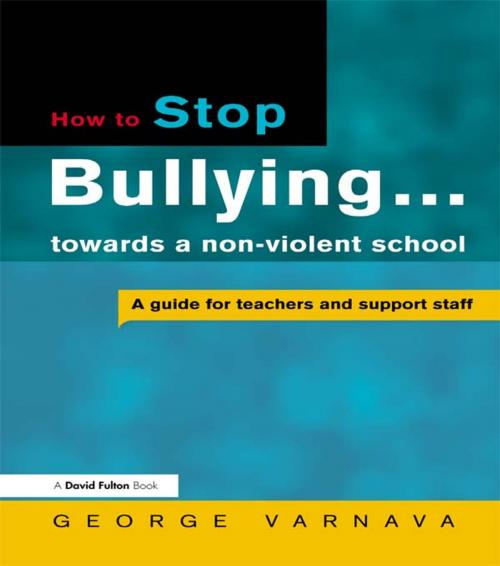How to Stop Bullying towards a non-violent school
A guide for teachers and support staff
Nonfiction, Reference & Language, Education & Teaching, Student & Student Life, Educational Theory, Philosophy & Social Aspects| Author: | George Varnava | ISBN: | 9781134152414 |
| Publisher: | Taylor and Francis | Publication: | June 3, 2014 |
| Imprint: | Routledge | Language: | English |
| Author: | George Varnava |
| ISBN: | 9781134152414 |
| Publisher: | Taylor and Francis |
| Publication: | June 3, 2014 |
| Imprint: | Routledge |
| Language: | English |
By providing teachers with a practical intervention program to prevent bullying in their schools, this book gives the reader tried and tested strategies to tackle a very challenging problem.
Creating a safe school environment where pupils feel secure is increasingly difficult, but this book shows how to devise a strategy, put it into practice, measure its effectiveness and extend the good practice into the wider community. The involvement of young people is a key element of this process.
With its roots firmly in practice, the book is based on a study of' common characteristics of schools that have successfully reduced bullying; case studies that show how change can be achieved; raising whole-school awareness of the problem; how to tackle bullying as a whole-school issue; involving the students and the student council; delivering in-service training to colleagues.
Primary and secondary school teachers, the school management team, learning mentors, teaching assistants and governors will find the guidance clear and suggested approaches helpful.
By providing teachers with a practical intervention program to prevent bullying in their schools, this book gives the reader tried and tested strategies to tackle a very challenging problem.
Creating a safe school environment where pupils feel secure is increasingly difficult, but this book shows how to devise a strategy, put it into practice, measure its effectiveness and extend the good practice into the wider community. The involvement of young people is a key element of this process.
With its roots firmly in practice, the book is based on a study of' common characteristics of schools that have successfully reduced bullying; case studies that show how change can be achieved; raising whole-school awareness of the problem; how to tackle bullying as a whole-school issue; involving the students and the student council; delivering in-service training to colleagues.
Primary and secondary school teachers, the school management team, learning mentors, teaching assistants and governors will find the guidance clear and suggested approaches helpful.















